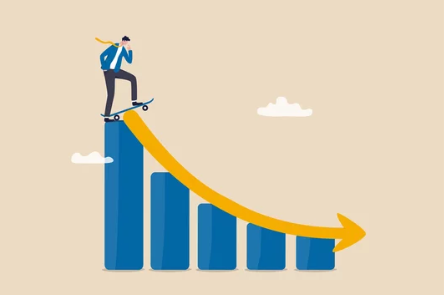The Upside of the Decline

If there’s any axiom in business (and in life, too), it is that an upward curve is generally beneficial.
Usually, we apply that standard to increases in income, production, sales, or grades in school. In short, upwards is good.
But conversely, a downward trend is seldom a reason for applause. No one wants lower grades, a decreased income, or reduced sales. Fortunately, this downward view doesn’t apply to Thermostat Recycling Corp.
We’ve been operating for more than 23 years, giving us an extended period to study what our numbers tell us. For example, if we examine last year’s efforts at recycling mercury-containing thermostats, we will note that our numbers for 2022 were less than 2021. Specifically, 73,152 mercury-containing thermostat units were collected and recycled in 2022 compared with 93,045 in 2021, a decrease of about 21%.
Some might describe a decline of 21% as a plunge. As a single data point, the number probably represents a bump in our 2021 collection numbers because we started to emerge from the COVID pandemic. (On March 11, 2020, the World Health Organization declared COVID a pandemic.)
The standout year for our efforts occurred in 2014, when we peaked by collecting 203,346 units.
Ultimately, it raises an important, seemingly fundamental question: What does this all mean?
It convincingly demonstrates that TRC has dutifully and faithfully adhered to its charter by collecting and safely recycling these units. We started modestly and eventually grew to include the contiguous United States in our collection efforts.
The numbers speak for themselves: We are approaching 3 million recycled units. Part of this success rests on TRC’s network of 3,600+ collection sites throughout the United States.
The glue that holds these collection sites together is our ability to form significant partnerships with groups with similar goals. For example, our association with HARDI was of inestimable value. Their broadly based membership represents the most successful wholesalers in the HVACR industry, and they played a significant role in providing (through its members) location drop-off points. We also made headway with recycling centers whose goals seamlessly match our environmental efforts.
What is left? I am no seer, but I’m willing to suggest that we will continue to have declining recycling numbers. It doesn’t mean we won’t stay the course and follow our mission, but it possibly indicates that we might catch a glimpse of the finish line, however vague it might be.
And that means in the ensuing years, as we issue press releases about our progress, those declining numbers should indicate that we are winning the environmental battle.

